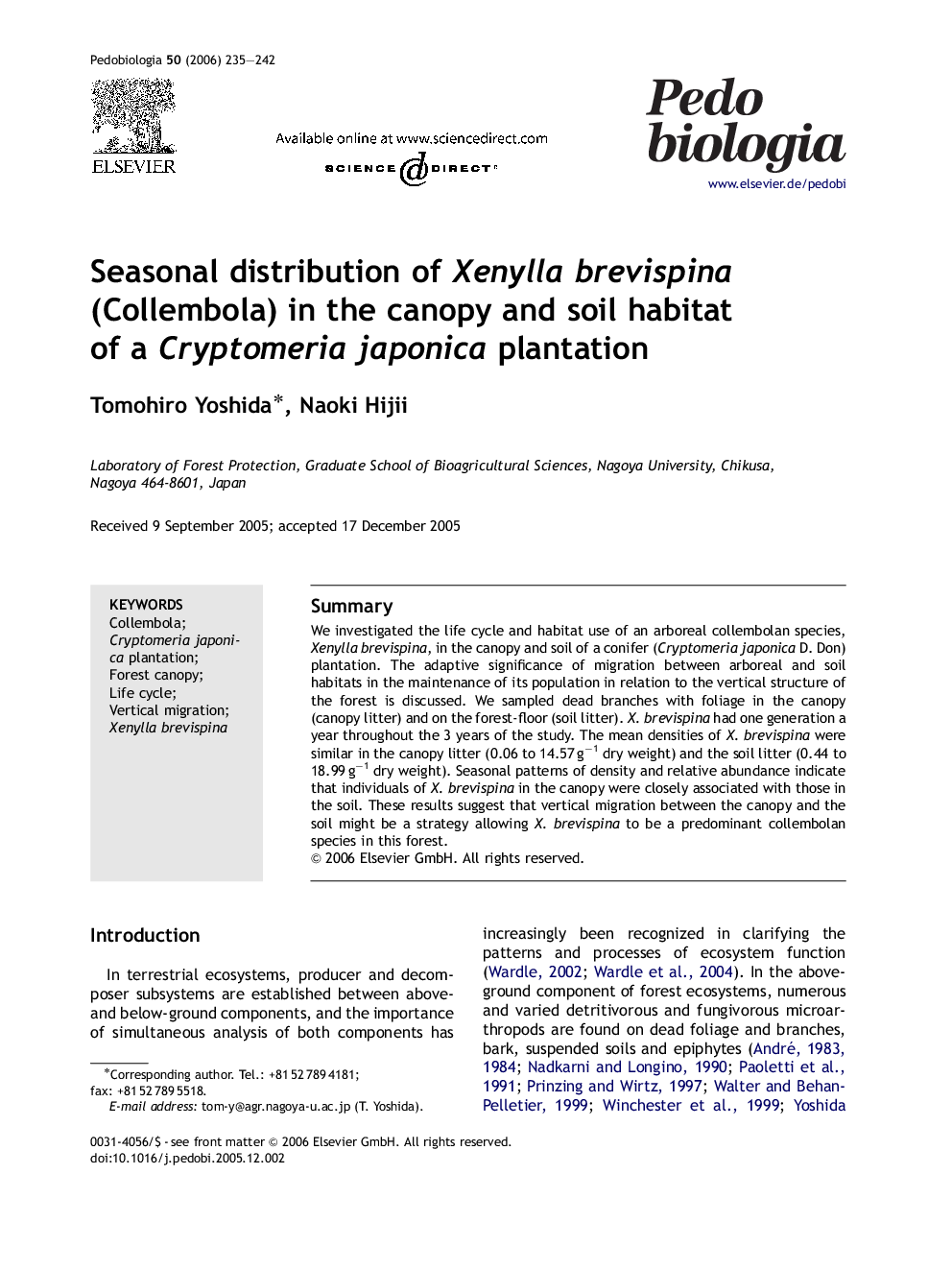| Article ID | Journal | Published Year | Pages | File Type |
|---|---|---|---|---|
| 2061398 | Pedobiologia | 2006 | 8 Pages |
SummaryWe investigated the life cycle and habitat use of an arboreal collembolan species, Xenylla brevispina, in the canopy and soil of a conifer (Cryptomeria japonica D. Don) plantation. The adaptive significance of migration between arboreal and soil habitats in the maintenance of its population in relation to the vertical structure of the forest is discussed. We sampled dead branches with foliage in the canopy (canopy litter) and on the forest-floor (soil litter). X. brevispina had one generation a year throughout the 3 years of the study. The mean densities of X. brevispina were similar in the canopy litter (0.06 to 14.57 g−1 dry weight) and the soil litter (0.44 to 18.99 g−1 dry weight). Seasonal patterns of density and relative abundance indicate that individuals of X. brevispina in the canopy were closely associated with those in the soil. These results suggest that vertical migration between the canopy and the soil might be a strategy allowing X. brevispina to be a predominant collembolan species in this forest.
